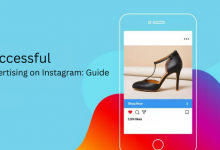Mastering the Sales Process – A Guide

A clear mastering in the sales process is the foundation for a company’s success. Ultimately, sales depend on the quality of the sales process. However, it is complex and multifaceted from market analysis to customer acquisition and customer retention, numerous components must be precisely coordinated. In this article, we examine the individual phases of the sales process in detail and show you how to optimally structure the sales path from initial contact to closing.
Learn how to target new customers, qualify leads, and conduct the perfect sales conversation. We’ll also take a look at common mistakes to avoid and the added value a CRM system like Salesforce offers your sales team.
Table of Content
What does the sales process look like?
But what exactly makes the sales process so complex? It’s the carefully coordinated interplay of planning, target group analysis, customer acquisition, and strategic communication. This dynamic interplay of multiple components makes the sales process so multifaceted. The fundamental goal is to turn prospects into satisfied customers and to make this process as efficient as possible. Every detail is important and intertwined: from the initial contact to long-term customer loyalty.
Target group and market analysis: The basis for successful sales
Every successful sales process begins with a thorough analysis of the market and the target audience. What needs, desires, and challenges do potential customers have? Which competitors and competing products dominate the market? Only with a deep understanding of the target audience can sales act in a targeted and effective manner. This phase lays the foundation upon which the subsequent steps are built and helps to offer customized solutions that precisely meet the requirements of the potential customer.
Information about your customers or potential customers allows you to develop and pursue a strategy.
Lead generation and qualification: First steps towards conversion
The next step is customer acquisition. In sales, leads are potential customers, and they need to be qualified and developed into opportunities. The approach must be precise, the arguments compelling, and the benefits for the customer clearly visible. Every contact, whether personal or digital, is an opportunity for conversion. A clear sales strategy supports the sales team in convincing the customer of the added value of the offer and building trust.
To convert an unqualified lead into a qualified one, the sales team must identify the customer’s needs and determine whether they fall within their expertise.
The sales conversation: The ideal presentation for closing the deal
The appropriate presentation of the offer is an important piece of the sales process and can be crucial in determining whether or not a deal is closed. All of the potential customer’s concerns should be addressed. And if a deal is closed, any details should be discussed. This is usually where changes to the general terms and conditions occur, but ultimately lead to the conclusion of the contract.
Follow-up: Relationship management and upselling
Isn’t the sales process complete with the signing of a contract? Absolutely not! Good relationships with your customers always offer opportunities for cross-selling or upselling.
But what exactly does that mean? Good customer relationship management allows you to sell customers a higher-value product (upselling) or recommend complementary products (cross-selling), thus building a long-term business relationship with multiple projects.
How does new customer acquisition work in sales?
How do you acquire new customers who don’t just buy once but stay with you long-term? Customer acquisition in sales is a precise craft – a process that extends far beyond the initial contact. With a clear focus on the customer’s needs and a thoughtful approach, a connection is created that not only engages but also convinces.
Targeted approach: The beginning of every successful acquisition
An effective sales process starts with a targeted approach. This involves more than just advertising slogans or attractive offers. The customer wants to feel understood. A thorough understanding of the target audience, combined with precise messages, makes all the difference and ensures that the customer feels heard not just “contacted.”
The power of benefit arguments
Why should a customer choose your offering? The trick lies in the benefit argument: Show clearly and convincingly how your solution solves the customer’s specific problems. No long monologues, but precise points regarding the benefits that immediately catch the eye and directly address the needs of the target audience.
Trust as the foundation for customer relationships
Trust is what turns new customers into long-term partners. Transparency and reliability should be evident right from the start. Targeted new customer acquisition builds bridges that not only lead to a sale but also lay the foundation for a lasting customer relationship.
How do you build a sales pipeline?
A sales pipeline is a visual representation of the individual steps at which potential new customers currently stand. A sales pipeline not only allows you to estimate revenue and sales closings, but also highlights potential weak points within your process. Several steps are important for building a strong sales pipeline:
- Qualify leads: As mentioned previously, qualifying leads is essential. It involves determining whether the lead is worth pursuing based on certain criteria. A lead scoring system, such as Salesforce’s, can significantly support your sales team in this regard.
- Lead nurturing: Leads and the associated relationships need to be nurtured. Customer nurturing can be achieved in a variety of ways: through follow-up calls, email marketing, or social media marketing. Tools like Salesforce Marketing Cloud Account Engagement ( formerly Pardot) enable campaign automation and facilitate the lead nurturing process.
- From lead to customer: At the end of the sales pipeline, the potential customer has ideally become an actual customer. This is referred to as a conversion. Stay in touch with the customer and maintain an overview of the situation so you can respond with appropriate offers.
What does the ideal sales conversation look like?
Preparation: A well-thought-out presentation is the key to success
While a large part of the sales process involves generating and qualifying leads, preparation for the sales conversation should still be important. Simply talking about your product may not be enough. Ideally, you should prepare an interactive demo tailored to the customer, showing features in action, and demonstrating the practical benefits to your customer. You can also support your sales team by giving them the opportunity to practice sales conversations. This is possible.
The introduction: A convincing first impression
What distinguishes a memorable sales conversation from one that gets lost in the noise of everyday life? The beginning of a sales conversation often determines its outcome. A convincing introduction signals professionalism and creates an open atmosphere in which the customer feels understood and valued. Authenticity counts here, not just a perfectly memorized sales pitch.
Needs assessment: Listening as the key to strategy
Anyone who wants to conduct the ideal sales conversation starts with a precise needs assessment. Instead of immediately focusing on the product, a genuine interest in the customer’s challenges and goals demonstrates true competence. Active listening creates a connection that builds trust and encourages the customer to disclose their needs the foundation of any compelling solution .
Argumentation and added value: Turning the customer into a partner
Now is the time to present the offering not as a mere product, but as a solution for the customer’s specific needs. A clear benefit argument that specifically addresses the previously identified points shows the customer that they have found a partner who speaks their language and is committed to their success. This turns the sales conversation into a shared journey toward the best decision.
What mistakes should you avoid in the sales process?
Mistakes are human. Nevertheless, some mistakes that could potentially undermine your sales success and brand trust can be avoided. But what exactly are these mistakes?
- Insufficient research: With proper preparation, you’ll be able to appear confident and present your product in the best possible way. If you don’t know your potential customer, it’ll be difficult to build trust. Understanding your target audience will allow you to address specific problems and offer appropriate solutions.
- Premature sales conversations: Qualification and discovery calls are the foundation for a promising sales conversations or Promotional Sales If these don’t take place, you risk a conversation taking place even though the prospect has different needs or a budget that’s too low.
- Not focusing on added value: Even if your product has impressive features that you want to highlight, the added value that is, the solution to a challenge is more important to your potential customer. Put yourself in the customer’s shoes. What interests them? What information do they really need for their specific situation?
- Lack of empathy: Directly related to the previous point is the empathy of your sales staff. If they are solely focused on closing the deal and not on the prospect’s problems, it will be difficult to build a relationship of trust.
- Lack of flexibility: The sales process shouldn’t follow a fixed script, with no flexibility to adapt. You shouldn’t stick rigidly to a plan, but rather be able to adapt spontaneously to a customer’s individual needs.
Failing to consider objections: A potential customer may have a variety of concerns they’ll raise, including timeframes, costs, lack of discernible value, and more. Try to anticipate every possible objection so you can be prepared with appropriate counterarguments.
How does a CRM system improve your sales process?
Maintaining an overview is essential in the sales process. A CRM system such Salesforce enables you to do just that and more. It centralizes all information about customers, leads, and sales opportunities and makes it available to every member of your sales team. This transforms chaotic data sets into a clear structure that guarantees efficiency and clarity.
How often do promising leads go unused? With a CRM system, this is a thing of the past. Automated reminders and workflows ensure that every lead is processed promptly. At the same time, it makes it easier to follow up with existing customers by providing relevant data such as contact histories or open offers.
A CRM isn’t just a tool, it’s a strategic companion. It provides analytics on sales cycles, customer behavior, and team performance. This data helps identify weak points and optimize the entire sales strategy – for increased revenue and long-term success.









